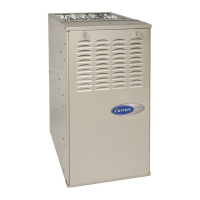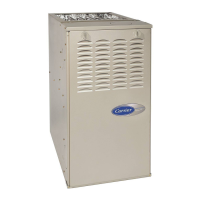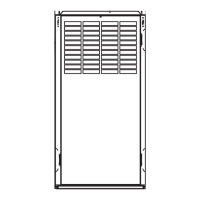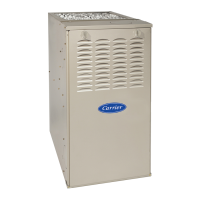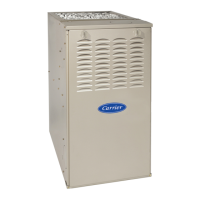58STA/58STX
Induced-Combustion
4-Way Multipoise Furnace
Catalog No: 535-80149 Form No. 58ST-13SI 5-05
Installation, Start-up, Operating, and
Service and Maintenance Instructions
-Series 120
The 58STA/STX 4-way Multipoise Gas Furnaces feature Carrier’s QuieTech™ noise reduction
system for incredibly quiet induced draft operation. Applications are easy with 4-way multipoise
design, through-the-furnace downflow venting, 13 different venting options, and a door designed for
easy service access. An inner blower door is provided for tighter sealing in sensitive applications.
The 58STA/STX furnaces are approved for use with natural or propane gas, and the 58STX is also
approved for use in Low NOx Air Quality Management Districts.
STANDARD FEATURES
- QuieTech noise reduction system
- Microprocessor based control center
Adjustable heating air temperature rise
Adjustable cooling airflow
LED diagnostics and self test feature
- 4-way Multipoise furnace, 13 vent applications
- Inner blower door
- Hot surface ignition (HSI)
- Draft safeguard switch to ensure proper furnace venting
- All models are Chimney-Friendly when used with
accessory vent kit
- Heat pump compatible
- Residential installations eligible for consumer financing
through the Retail Credit Program
- Twinning in Upflow, Downflow and Horizontal
LIMITED WARRANTY
- 20-year warranty on "Super S™" heat exchanger
- 5-year parts warranty on all other components
